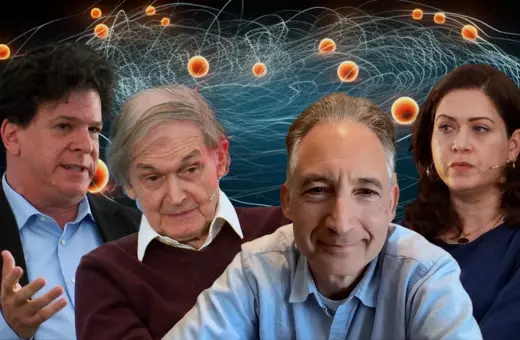Although its allure and longevity is undeniable, the idea of infinite parallel universes –the multiverse - is untested and could never be tested. In this way it is unscientific in the barest sense, despite continuing to find supporters among serious, prominent scientists. With science in something of a slump, are these theorists simply indulging in a little fantasy, asks John Horgan.
Over a decade ago in 1990, I wrote a bit of fluff for Scientific American about whether our cosmos might be just one in an “infinitude,” as several theories of physics implied. I titled my piece “Here a Universe, There a Universe . . .” and kept the tone light, because I didn’t want readers to take these cosmic conjectures too seriously. After all, there was no way of proving, or disproving, the existence of other universes.*
 SUGGESTED READING
The many worlds fantasy
By Philip Ball
Today, physicists still lack evidence of other universes, or even good ideas for obtaining evidence. Many nonetheless insist our cosmos really is just a mote of dust in a vast “multiverse.” One especially eloquent and passionate multiverse theorist is Sean Carroll. His faith in the multiverse stems from his faith in quantum mechanics, which he sees as our best account of reality.
SUGGESTED READING
The many worlds fantasy
By Philip Ball
Today, physicists still lack evidence of other universes, or even good ideas for obtaining evidence. Many nonetheless insist our cosmos really is just a mote of dust in a vast “multiverse.” One especially eloquent and passionate multiverse theorist is Sean Carroll. His faith in the multiverse stems from his faith in quantum mechanics, which he sees as our best account of reality.
In his book Something Deeply Hidden, Carroll asserts that quantum mechanics describes not just very small things but everything, including us. “As far as we currently know,” he writes, “quantum mechanics isn’t just an approximation to the truth; it is the truth.” And however preposterous it might seem, a multiverse, Carroll argues, is an inescapable consequence of quantum mechanics.
To make his case, he takes us deep into the surreal quantum world. Our world! The basic quantum equation, called a wave function, shows a particle—an electron, say—inhabiting many possible positions, with different probabilities assigned to each one. Aim an instrument at the electron to determine where it is, and you’ll find it in just one place. You might reasonably assume that the wave function is just a statistical approximation of the electron’s behavior, which can’t be more precise because electrons are tiny and our instruments crude. But you would be wrong, according to Carroll. The electron exists as a kind of probabilistic blur until you observe it, when it “collapses,” in physics lingo, into a single position.
Today, physicists still lack evidence of other universes, or even good ideas for obtaining evidence. Many nonetheless insist our cosmos really is just a mote of dust in a vast “multiverse.”
Physicists and philosophers have been arguing about this “measurement problem” for almost a century now. Various other explanations have been proposed, but most are either implausible, making human consciousness a necessary component of reality, or kludgy, requiring ad hoc tweaks of the wave function. The only solution that makes sense to Carroll—because it preserves quantum mechanics in its purest form—was proposed in 1957 by a Princeton graduate student, Hugh Everett III. He conjectured that the electron actually inhabits all the positions allowed by the wave function, but in different universes.



















Join the conversation